My
List |
Addition Date
|
Target
|
Mission
|
Instrument
|
Size
|

|
2009-04-28 |
M33
|
Galaxy Evolution Explorer (GALEX)
Spitzer Space Telescope
|
Ultraviolet/Visible Camera
|
4402x4402x3 |
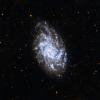
|
-
PIA12000:
-
NASA's Galaxy Mission Celebrates Sixth Anniversary
Full Resolution:
TIFF
(58.13 MB)
JPEG
(1.866 MB)
|

|
2009-04-28 |
M33
|
Galaxy Evolution Explorer (GALEX)
Spitzer Space Telescope
|
Ultraviolet/Visible Camera
|
2228x3462x3 |

|
-
PIA11999:
-
NASA's Galaxy Mission Celebrates Sixth Anniversary
Full Resolution:
TIFF
(23.17 MB)
JPEG
(1.039 MB)
|

|
2009-04-28 |
M33
|
Galaxy Evolution Explorer (GALEX)
Spitzer Space Telescope
|
Ultraviolet/Visible Camera
|
2228x3462x3 |

|
-
PIA11998:
-
NASA's Galaxy Mission Celebrates Sixth Anniversary
Full Resolution:
TIFF
(23.17 MB)
JPEG
(811.1 kB)
|

|
2009-04-07 |
|
Spitzer Space Telescope
|
|
3000x2400x3 |
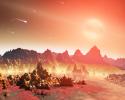
|
-
PIA11980:
-
Chemical Soups Around Cool Stars (Artist Concept)
Full Resolution:
TIFF
(21.6 MB)
JPEG
(519.4 kB)
|

|
2009-04-07 |
|
Spitzer Space Telescope
|
|
3000x2400x3 |
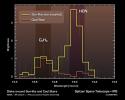
|
-
PIA11979:
-
Cool Stars May Have Different Prebiotic Chemical Mix
Full Resolution:
TIFF
(21.6 MB)
JPEG
(322.1 kB)
|

|
2009-04-03 |
M33
|
Spitzer Space Telescope
|
IRAC
|
4300x2800x3 |
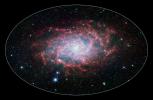
|
-
PIA11970:
-
M33: A Close Neighbor Reveals its True Size and Splendor
Full Resolution:
TIFF
(36.12 MB)
JPEG
(1.858 MB)
|

|
2009-04-03 |
M33
|
Spitzer Space Telescope
|
IRAC
MIPS
|
4300x2800x3 |
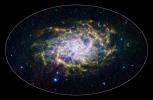
|
-
PIA11969:
-
M33: A Close Neighbor Reveals its True Size and Splendor (3-color composite)
Full Resolution:
TIFF
(36.12 MB)
JPEG
(1.714 MB)
|

|
2009-03-16 |
NGC 6240
|
Spitzer Space Telescope
|
IRAC
|
3921x3805x3 |
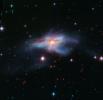
|
-
PIA11828:
-
Galaxies Collide to Create Hot, Huge Galaxy
Full Resolution:
TIFF
(44.76 MB)
JPEG
(1.418 MB)
|

|
2009-03-12 |
NGC 6543
|
Spitzer Space Telescope
|
IRAC
|
1700x1700x3 |
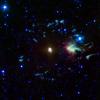
|
-
PIA11827:
-
Galactic Dust Bunnies Found to Contain Carbon After All
Full Resolution:
TIFF
(8.684 MB)
JPEG
(232 kB)
|

|
2009-02-10 |
Messier 101
|
Hubble Space Telescope
Spitzer Space Telescope
|
Chandra X-ray Telescope
IRAC
Visible Light
|
7200x7200x3 |

|
-
PIA11797:
-
NASA's Great Observatories Celebrate the International Year of Astronomy
Full Resolution:
TIFF
(155.5 MB)
JPEG
(6.529 MB)
|

|
2009-02-10 |
Messier 101
|
Hubble Space Telescope
Spitzer Space Telescope
|
IRAC
|
7200x7200x3 |
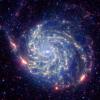
|
-
PIA11796:
-
Spitzer Space Telescope's View of Galaxy Messier 101
Full Resolution:
TIFF
(155.5 MB)
JPEG
(2.86 MB)
|

|
2009-01-28 |
|
Spitzer Space Telescope
|
IRAC
|
638x477x3 |
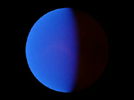
|
-
PIA11392:
-
Tour of Planet with Extreme Temperature Swings

Full Resolution:
TIFF
(914.2 kB)
JPEG
(9.75 kB)
|

|
2009-01-28 |
|
Spitzer Space Telescope
|
IRAC
|
3000x2400x3 |
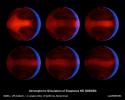
|
-
PIA11391:
-
Severe Exoplanetary Storm
Full Resolution:
TIFF
(21.6 MB)
JPEG
(243.5 kB)
|

|
2009-01-28 |
|
Spitzer Space Telescope
|
IRAC
|
3000x2400x3 |
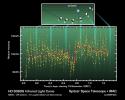
|
-
PIA11390:
-
Light from Red-Hot Planet
Full Resolution:
TIFF
(21.6 MB)
JPEG
(506.4 kB)
|

|
2009-01-06 |
Cassiopeia A
|
Chandra X-ray Observatory
Spitzer Space Telescope
|
Chandra X-ray Telescope
IRAC
|
719x479x3 |
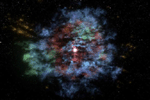
|
-
PIA11748:
-
Supernova Remnant in 3-D

Full Resolution:
TIFF
(1.035 MB)
JPEG
(36.78 kB)
|

|
2009-01-06 |
|
Spitzer Space Telescope
|
IRAC
|
708x799x3 |

|
-
PIA11747:
-
Baby Jupiters Must Gain Weight Fast
Full Resolution:
TIFF
(1.699 MB)
JPEG
(82.57 kB)
|

|
2009-01-05 |
GD 40
|
Spitzer Space Telescope
|
|
3000x2400x3 |
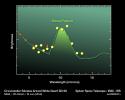
|
-
PIA11736:
-
Silicates in Alien Asteroids
Full Resolution:
TIFF
(21.6 MB)
JPEG
(278.5 kB)
|

|
2009-01-05 |
|
Spitzer Space Telescope
|
|
3000x2400x3 |
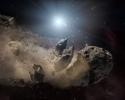
|
-
PIA11735:
-
Asteroid 'Bites the Dust' Around Dead Star (Artist Concept)
Full Resolution:
TIFF
(21.6 MB)
JPEG
(430 kB)
|

|
2008-12-16 |
|
Spitzer Space Telescope
|
IRAC
MIPS
|
1500x1500x3 |
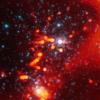
|
-
PIA11726:
-
Devastated Stellar Neighborhood
Full Resolution:
TIFF
(6.762 MB)
JPEG
(130.6 kB)
|

|
2008-12-10 |
|
Spitzer Space Telescope
|
|
3000x2400x3 |
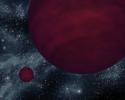
|
-
PIA11447:
-
Not-So-Bright Bulbs (Artist Concept)
Full Resolution:
TIFF
(21.6 MB)
JPEG
(321.3 kB)
|

|
2008-12-08 |
|
Spitzer Space Telescope
|
IRAC
|
2674x2176x3 |
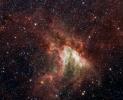
|
-
PIA11445:
-
Celestial Sea of Stars
Full Resolution:
TIFF
(17.47 MB)
JPEG
(1.163 MB)
|

|
2008-12-08 |
M17
|
Spitzer Space Telescope
|
IRAC
|
2674x2176x3 |
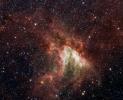
|
-
PIA12071:
-
Celestial Sea of Stars
Full Resolution:
TIFF
(17.47 MB)
JPEG
(1.152 MB)
|

|
2008-12-03 |
|
Spitzer Space Telescope
|
MIPS
|
943x945x3 |
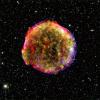
|
-
PIA11435:
-
Vivid View of Tycho's Supernova Remnant
Full Resolution:
TIFF
(2.677 MB)
JPEG
(204 kB)
|

|
2008-11-11 |
|
Spitzer Space Telescope
|
Infrared Spectrograph (IRS)
|
3000x2400x3 |
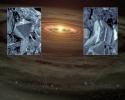
|
-
PIA11417:
-
Quartz-like Crystals Found in Planetary Disks
Full Resolution:
TIFF
(21.6 MB)
JPEG
(607 kB)
|

|
2008-10-27 |
Epsilon Eridani
|
Spitzer Space Telescope
|
|
3000x2400x3 |
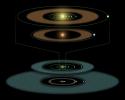
|
-
PIA11376:
-
Young Solar System in the Making (Artist Concept)
Full Resolution:
TIFF
(21.6 MB)
JPEG
(405.7 kB)
|

|
2008-10-27 |
Epsilon Eridani
|
Spitzer Space Telescope
|
|
3000x1600x3 |
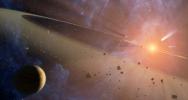
|
-
PIA11375:
-
Double the Rubble (Artist Concept)
Full Resolution:
TIFF
(14.4 MB)
JPEG
(249.1 kB)
|

|
2008-10-08 |
NGC 346
|
Spitzer Space Telescope
|
IRAC
|
1560x1560x3 |
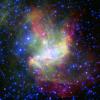
|
-
PIA11227:
-
Stellar Work of Art
Full Resolution:
TIFF
(7.314 MB)
JPEG
(245.9 kB)
|

|
2008-10-06 |
NGC 6193
|
Chandra X-ray Observatory
Spitzer Space Telescope
|
Chandra X-ray Telescope
IRAC
|
3300x3135x3 |
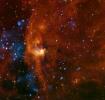
|
-
PIA11226:
-
RCW 108: Massive Young Stars Trigger Stellar Birth
Full Resolution:
TIFF
(31.04 MB)
JPEG
(524.6 kB)
|

|
2008-10-01 |
Cassiopeia A
|
Spitzer Space Telescope
|
MIPS
|
1769x1341x3 |
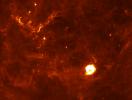
|
-
PIA11213:
-
Supernova Flashback
Full Resolution:
TIFF
(7.128 MB)
JPEG
(135.1 kB)
|

|
2008-09-18 |
Perseus
|
Spitzer Space Telescope
|
IRAC
|
1760x1160x3 |
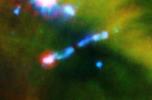
|
-
PIA11173:
-
Laser-Sharp Jet Splits Water
Full Resolution:
TIFF
(6.134 MB)
JPEG
(71.09 kB)
|

|
2008-08-22 |
W5
|
Spitzer Space Telescope
|
IRAC
|
6436x7288x3 |

|
-
PIA11047:
-
Spitzer Reveals Stellar 'Family Tree'
Full Resolution:
TIFF
(140.7 MB)
JPEG
(4.212 MB)
|

|
2008-08-22 |
W5
|
Spitzer Space Telescope
|
IRAC
MIPS
|
6436x7288x3 |

|
-
PIA11046:
-
Spitzer Reveals Stellar 'Family Tree'
Full Resolution:
TIFF
(140.7 MB)
JPEG
(3.055 MB)
|

|
2008-07-21 |
Messier 101
|
Spitzer Space Telescope
|
IRAC
Infrared Spectrograph (IRS)
MIPS
|
2766x2766x3 |
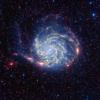
|
-
PIA10968:
-
"No Organics" Zone Circles Pinwheel
Full Resolution:
TIFF
(22.95 MB)
JPEG
(1.154 MB)
|

|
2008-07-21 |
Messier 101
|
Spitzer Space Telescope
|
IRAC
|
2766x2766x3 |
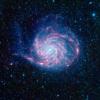
|
-
PIA10967:
-
Pinwheel Looks 'Fab' in Infrared
Full Resolution:
TIFF
(22.95 MB)
JPEG
(1.421 MB)
|

|
2008-07-15 |
|
Spitzer Space Telescope
|
IRAC
MIPS
|
8000x4500x3 |
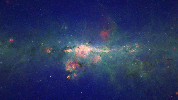
|
-
PIA10955:
-
'Peony Nebula' Star Settles for Silver Medal

Full Resolution:
TIFF
(108 MB)
JPEG
(6.04 MB)
|

|
2008-07-10 |
|
Spitzer Space Telescope
|
|
936x936x3 |
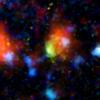
|
-
PIA10932:
-
Super Starburst Galaxy
Full Resolution:
TIFF
(2.632 MB)
JPEG
(50.75 kB)
|

|
2008-06-03 |
Milky Way
|
Spitzer Space Telescope
|
IRAC
MIPS
|
14400x10800x3 |
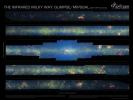
|
-
PIA10750:
-
Spitzer Finds Clarity in the Inner Milky Way
Full Resolution:
TIFF
(466.6 MB)
JPEG
(19.03 MB)
|

|
2008-06-03 |
Milky Way
|
Spitzer Space Telescope
|
IRAC
|
14400x10800x3 |
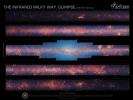
|
-
PIA10749:
-
Inner Milky Way Raging with Star Formation
Full Resolution:
TIFF
(466.6 MB)
JPEG
(26.13 MB)
|

|
2008-06-03 |
Milky Way
|
Spitzer Space Telescope
|
|
5600x5600x3 |
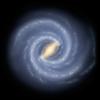
|
-
PIA10748:
-
Our Milky Way Gets a Makeover (Artist Concept)
Full Resolution:
TIFF
(94.08 MB)
JPEG
(2.05 MB)
|

|
2008-05-29 |
Cassiopeia A
|
Spitzer Space Telescope
|
|
5000x4965x3 |
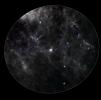
|
-
PIA10725:
-
Dance of the Light Echoes
Full Resolution:
TIFF
(74.48 MB)
JPEG
(1.502 MB)
|

|
2008-05-29 |
Cassiopeia A
|
Spitzer Space Telescope
|
|
641x479x3 |
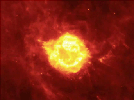
|
-
PIA10724:
-
Cauldron of Light

Full Resolution:
TIFF
(922.3 kB)
JPEG
(21.94 kB)
|

|
2008-05-29 |
|
Spitzer Space Telescope
|
|
641x481x3 |
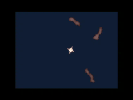
|
-
PIA10723:
-
Dissecting a Light Echo

Full Resolution:
TIFF
(926.2 kB)
JPEG
(10.23 kB)
|

|
2008-05-28 |
|
Spitzer Space Telescope
|
IRAC
Infrared Spectrograph (IRS)
MIPS
|
925x925x3 |
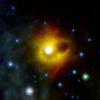
|
-
PIA10711:
-
Ghostly Ring
Full Resolution:
TIFF
(2.571 MB)
JPEG
(35.42 kB)
|

|
2008-04-10 |
Omega Centauri
|
Spitzer Space Telescope
|
IRAC
Multiband Imaging Photometer (MIPS)
|
1400x1400x3 |
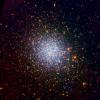
|
-
PIA10372:
-
Omega Centauri Looks Radiant in Infrared
Full Resolution:
TIFF
(5.891 MB)
JPEG
(356.3 kB)
|

|
2008-03-27 |
HD 189733b
|
Spitzer Space Telescope
|
|
1514x1499x3 |
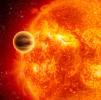
|
-
PIA10364:
-
NASA's Spitzer Finds Water Vapor on Hot, Alien Planet (Artist's Concept)
Full Resolution:
TIFF
(6.821 MB)
JPEG
(233.2 kB)
|

|
2008-02-12 |
Abell 1689
|
Hubble Space Telescope
Spitzer Space Telescope
|
Advanced Camera for Surveys
Infrared Array Camera (IRAC)
NICMOS
|
3813x3367x3 |
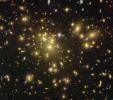
|
-
PIA10237:
-
Astronomers Uncover One of the Youngest and Brightest Galaxies in the Early Universe
Full Resolution:
TIFF
(38.52 MB)
JPEG
(3.231 MB)
|

|
2008-02-11 |
Rho Ophiuchi
|
Spitzer Space Telescope
|
IRAC
|
6020x2905x3 |
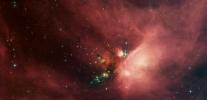
|
-
PIA10182:
-
Young Stars in Their Baby Blanket of Dust
Full Resolution:
TIFF
(52.46 MB)
JPEG
(1.065 MB)
|

|
2008-02-11 |
Rho Ophiuchi
|
Spitzer Space Telescope
|
IRAC
Multiband Imaging Photometer (MIPS)
|
6020x2905x3 |
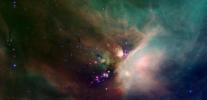
|
-
PIA10181:
-
Young Stars in Their Baby Blanket of Dust
Full Resolution:
TIFF
(52.46 MB)
JPEG
(812 kB)
|

|
2008-01-25 |
Abell 1763
|
Spitzer Space Telescope
|
|
2688x1962x3 |
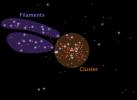
|
-
PIA10227:
-
Celestial Cities and the Roads That Connect Them
Full Resolution:
TIFF
(15.84 MB)
JPEG
(140 kB)
|

|
2008-01-10 |
|
Spitzer Space Telescope
|
|
3000x2400x3 |
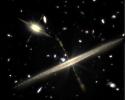
|
-
PIA10221:
-
Galaxies of all Shapes Host Black Holes (Artist Concept)
Full Resolution:
TIFF
(21.6 MB)
JPEG
(249 kB)
|

|
2008-01-10 |
NGC 3621
|
Spitzer Space Telescope
|
Infrared Spectrograph (IRS)
|
3000x2400x3 |
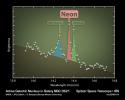
|
-
PIA10220:
-
Slender Galaxy with Robust Black Hole
Full Resolution:
TIFF
(21.6 MB)
JPEG
(326.6 kB)
|

|
2007-12-20 |
Cassiopeia A
|
Spitzer Space Telescope
|
Infrared Spectrograph (IRS)
|
960x960x3 |
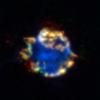
|
-
PIA10206:
-
Cosmic Ornament of Gas and Dust
Full Resolution:
TIFF
(2.769 MB)
JPEG
(33.43 kB)
|

|
2007-12-20 |
Cassiopeia A
|
Spitzer Space Telescope
|
Infrared Spectrograph (IRS)
|
3000x2400x3 |
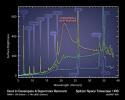
|
-
PIA10207:
-
Dissecting the Wake of a Supernova Explosion
Full Resolution:
TIFF
(21.6 MB)
JPEG
(400.6 kB)
|

|
2007-12-18 |
NGC 4258
|
Spitzer Space Telescope
|
IRAC
|
3000x2501x3 |
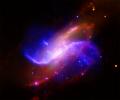
|
-
PIA10204:
-
Anomalous Arms
Full Resolution:
TIFF
(22.51 MB)
JPEG
(238.8 kB)
|

|
2007-12-13 |
M51
|
Galaxy Evolution Explorer (GALEX)
Spitzer Space Telescope
|
IRAC
Ultraviolet/Visible Camera
|
1978x2850x3 |

|
-
PIA10200:
-
A Classic Beauty
Full Resolution:
TIFF
(16.93 MB)
JPEG
(526.5 kB)
|

|
2007-11-29 |
L1157
|
Spitzer Space Telescope
|
IRAC
|
1171x1444x3 |

|
-
PIA10119:
-
Baby Picture of our Solar System

Full Resolution:
TIFF
(5.079 MB)
JPEG
(154.9 kB)
|

|
2007-11-08 |
HH 46/47
|
Spitzer Space Telescope
|
IRAC
|
2000x1600x3 |
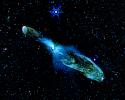
|
-
PIA10111:
-
Bubbly Little Star
Full Resolution:
TIFF
(9.613 MB)
JPEG
(240.8 kB)
|

|
2007-10-25 |
|
Spitzer Space Telescope
|
|
3000x2400x3 |
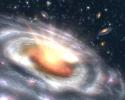
|
-
PIA10093:
-
Bursting with Stars and Black Holes (Artist Concept)
Full Resolution:
TIFF
(21.6 MB)
JPEG
(501.4 kB)
|

|
2007-10-25 |
|
Spitzer Space Telescope
|
MIPS
|
1003x1139x3 |

|
-
PIA10091:
-
Missing Black Holes Found!
Full Resolution:
TIFF
(1.145 MB)
JPEG
(69.72 kB)
|

|
2007-10-22 |
|
Spitzer Space Telescope
|
IRAC
|
2084x2302x3 |

|
-
PIA10087:
-
Wanted: Galactic Thief Who Steals Gas
Full Resolution:
TIFF
(14.41 MB)
JPEG
(236.2 kB)
|

|
2007-10-22 |
|
Spitzer Space Telescope
|
Infrared Spectrometer (IRS)
|
2997x1689x3 |
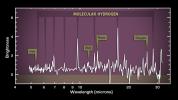
|
-
PIA10086:
-
Cosmic Caper Unfolds in Infrared
Full Resolution:
TIFF
(15.19 MB)
JPEG
(269.1 kB)
|

|
2007-10-09 |
|
Spitzer Space Telescope
|
Infrared Spectrograph (IRS)
|
3000x2400x3 |
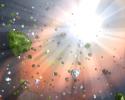
|
-
PIA10019:
-
Dust in the Quasar Wind (Artist Concept)
Full Resolution:
TIFF
(21.6 MB)
JPEG
(291.3 kB)
|

|
2007-10-09 |
|
Spitzer Space Telescope
|
Infrared Spectrograph (IRS)
|
2865x1749x3 |
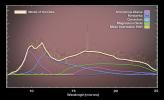
|
-
PIA09932:
-
A Wealth of Dust Grains in Quasar Winds
Full Resolution:
TIFF
(15.03 MB)
JPEG
(288.3 kB)
|

|
2007-10-03 |
|
Spitzer Space Telescope
|
|
3000x2400x3 |
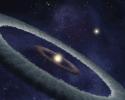
|
-
PIA09931:
-
Birth of an Earth-like Planet (Artist Xoncept)
Full Resolution:
TIFF
(21.6 MB)
JPEG
(281.9 kB)
|

|
2007-09-13 |
|
Spitzer Space Telescope
|
IRAC
|
3300x3300x3 |
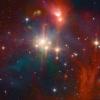
|
-
PIA09926:
-
Infrared Coronet Cluster
Full Resolution:
TIFF
(32.67 MB)
JPEG
(583.5 kB)
|

|
2007-09-13 |
|
Spitzer Space Telescope
|
IRAC
Chandra X-ray Telescope
|
3300x3300x3 |
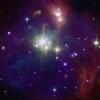
|
-
PIA09925:
-
Coronet: A Star-Formation Neighbor
Full Resolution:
TIFF
(32.67 MB)
JPEG
(407 kB)
|

|
2007-08-29 |
NGC 1333
|
Spitzer Space Telescope
|
|
3200x2400x3 |
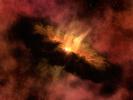
|
-
PIA09967:
-
Water's Early Journey in a Solar System (Artist Concept)
Full Resolution:
TIFF
(23.04 MB)
JPEG
(336.4 kB)
|

|
2007-08-29 |
NGC 1333
|
Spitzer Space Telescope
|
IRAC
|
3000x2400x3 |
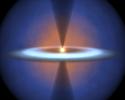
|
-
PIA09966:
-
Steamy Solar System
Full Resolution:
TIFF
(21.6 MB)
JPEG
(167.5 kB)
|

|
2007-08-29 |
NGC 1333
|
Spitzer Space Telescope
|
Infrared Spectrograph (IRS)
|
3000x2400x3 |
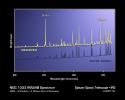
|
-
PIA09965:
-
Spitzer Sees Water Loud and Clear
Full Resolution:
TIFF
(21.6 MB)
JPEG
(987.8 kB)
|

|
2007-08-24 |
Helix Nebula
|
Spitzer Space Telescope
|
IRAC
|
4370x4070x3 |
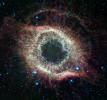
|
-
PIA09962:
-
Spitzer Celebrates Fourth Anniversary with Celestial Fireworks
Full Resolution:
TIFF
(53.36 MB)
JPEG
(2.378 MB)
|

|
2007-08-06 |
CL0958+4702
|
Spitzer Space Telescope
|
|
3000x2400x3 |
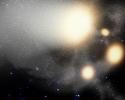
|
-
PIA09957:
-
Galactic Pile-Up (Artist Concept)
Full Resolution:
TIFF
(21.6 MB)
JPEG
(774.2 kB)
|

|
2007-08-06 |
CL0958+4702
|
Spitzer Space Telescope
|
|
3000x2400x3 |
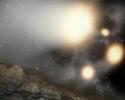
|
-
PIA09956:
-
Fantastic Four Galaxies with Planet (Artist Concept)
Full Resolution:
TIFF
(21.6 MB)
JPEG
(941.8 kB)
|

|
2007-08-06 |
CL0958+4702
|
Spitzer Space Telescope
|
IRAC
|
690x690x3 |
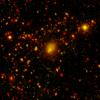
|
-
PIA09955:
-
Fearsome Foursome
Full Resolution:
TIFF
(1.43 MB)
JPEG
(64.28 kB)
|

|
2007-07-24 |
|
Spitzer Space Telescope
|
|
3000x2400x3 |
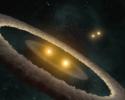
|
-
PIA09939:
-
Evidence for Strange Stellar Family (Artist Concept)
Full Resolution:
TIFF
(21.6 MB)
JPEG
(256.6 kB)
|

|
2007-07-11 |
HD 189733b
|
Spitzer Space Telescope
|
Infrared Spectrograph (IRS)
|
3000x2136x3 |
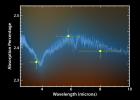
|
-
PIA09715:
-
Exoplanet Forecast: Hot and Wet
Full Resolution:
TIFF
(19.22 MB)
JPEG
(259.2 kB)
|

|
2007-06-13 |
N132D
|
Spitzer Space Telescope
|
Chandra X-ray Telescope
Infrared Array Camera (IRAC)
Multiband Imaging Photometer (MIPS)
|
1806x1200x3 |
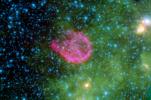
|
-
PIA09604:
-
A Supernova's Shockwaves
Full Resolution:
TIFF
(6.511 MB)
JPEG
(206.6 kB)
|

|
2007-06-01 |
Messier 81
|
Galaxy Evolution Explorer (GALEX)
Hubble Space Telescope
Spitzer Space Telescope
|
GALEX Telescope
Infrared Array Camera (IRAC)
Visible Light
|
3180x2456x3 |
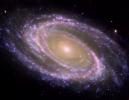
|
-
PIA09579:
-
M81 Galaxy is Pretty in Pink
Full Resolution:
TIFF
(23.43 MB)
JPEG
(1.061 MB)
|

|
2007-05-29 |
|
Spitzer Space Telescope
|
IRAC
|
4097x3557x3 |
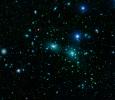
|
-
PIA09561:
-
Dwarfs in Coma Cluster
Full Resolution:
TIFF
(43.72 MB)
JPEG
(1.199 MB)
|

|
2007-05-17 |
Barnard 30
|
Spitzer Space Telescope
|
IRAC
|
3086x1711x3 |
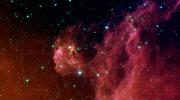
|
-
PIA09412:
-
Young Stars Emerge from Orion's Head
Full Resolution:
TIFF
(15.84 MB)
JPEG
(627.4 kB)
|

|
2007-05-17 |
Barnard 30
|
Spitzer Space Telescope
|
IRAC
Multiband Imaging Photometer (MIPS)
|
3182x1282x3 |
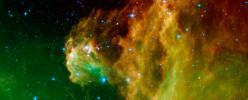
|
-
PIA09411:
-
Young Stars Emerge from Orion's Head
Full Resolution:
TIFF
(12.24 MB)
JPEG
(490.4 kB)
|

|
2007-05-09 |
HD 149026b
|
Spitzer Space Telescope
|
|
638x479x3 |
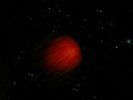
|
-
PIA09378:
-
Blacker than Black (Artist's Concept)

Full Resolution:
TIFF
(918 kB)
JPEG
(12.32 kB)
|

|
2007-05-09 |
HD 189733b
|
Spitzer Space Telescope
|
IRAC
|
640x467x3 |
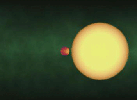
|
-
PIA09377:
-
How to Map a Very Faraway Planet (animation)

Full Resolution:
TIFF
(897.8 kB)
JPEG
(11.68 kB)
|

|
2007-05-09 |
HD 189733b
|
Spitzer Space Telescope
|
IRAC
|
640x473x3 |
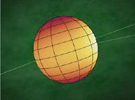
|
-
PIA09376:
-
First Map of Alien World (animation)

Full Resolution:
TIFF
(909.3 kB)
JPEG
(23.38 kB)
|

|
2007-05-01 |
|
Spitzer Space Telescope
|
IRAC
Visible Light
|
2838x948x3 |
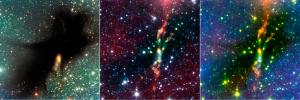
|
-
PIA09338:
-
Spitzer Digs Up Hidden Stars
Full Resolution:
TIFF
(8.071 MB)
JPEG
(398.7 kB)
|

|
2007-04-18 |
Rosette Nebula
|
Spitzer Space Telescope
|
IRAC
|
639x479x3 |

|
-
PIA09268:
-
Infrared Rose

Full Resolution:
TIFF
(919.4 kB)
JPEG
(54.85 kB)
|

|
2007-04-18 |
Rosette Nebula
|
Spitzer Space Telescope
|
IRAC
|
1669x1439x3 |
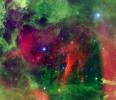
|
-
PIA09267:
-
Every Rose has a Thorn
Full Resolution:
TIFF
(7.217 MB)
JPEG
(286.2 kB)
|

|
2007-04-18 |
Rosette Nebula
|
Spitzer Space Telescope
|
|
3300x2400x3 |
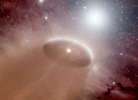
|
-
PIA09266:
-
Highway to the Danger Zone (Artist Concept)

Full Resolution:
TIFF
(23.76 MB)
JPEG
(244.6 kB)
|

|
2007-04-16 |
Pleiades
|
Spitzer Space Telescope
|
IRAC
Multiband Imaging Photometer (MIPS)
|
2855x2855x3 |
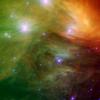
|
-
PIA09263:
-
The Seven Sisters Pose for Spitzer
Full Resolution:
TIFF
(24.45 MB)
JPEG
(779.5 kB)
|

|
2007-04-16 |
Pleiades
|
Spitzer Space Telescope
|
IRAC
|
2855x2855x3 |
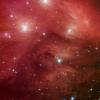
|
-
PIA09262:
-
Pink Pleiades
Full Resolution:
TIFF
(24.45 MB)
JPEG
(980.3 kB)
|

|
2007-03-29 |
|
Spitzer Space Telescope
|
|
3000x2400x3 |
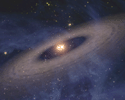
|
-
PIA09229:
-
Two Suns Raise Family of Planetary Bodies (Artist Animation)

Full Resolution:
TIFF
(21.6 MB)
JPEG
(309.2 kB)
|

|
2007-03-29 |
|
Spitzer Space Telescope
|
|
3000x2000x3 |
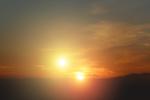
|
-
PIA09228:
-
Alien Sunset (Artist Concept)
Full Resolution:
TIFF
(18 MB)
JPEG
(239.4 kB)
|

|
2007-03-29 |
|
Spitzer Space Telescope
|
IRAC
|
3000x2400x3 |
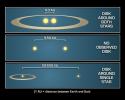
|
-
PIA09227:
-
Where Planets Take up Residence
Full Resolution:
TIFF
(21.6 MB)
JPEG
(348.8 kB)
|

|
2007-02-21 |
|
Spitzer Space Telescope
|
|
3000x2400x3 |
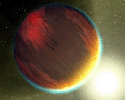
|
-
PIA09200:
-
Exotic Atmospheres
(Artist Concept)

Full Resolution:
TIFF
(21.6 MB)
JPEG
(257.1 kB)
|

|
2007-02-21 |
|
Spitzer Space Telescope
|
Infrared Spectrograph (IRS)
|
3000x2400x3 |
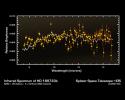
|
-
PIA09199:
-
Cracking the Code of Faraway Worlds
Full Resolution:
TIFF
(21.6 MB)
JPEG
(354 kB)
|

|
2007-02-21 |
|
Spitzer Space Telescope
|
Infrared Spectrograph (IRS)
|
3000x2400x3 |
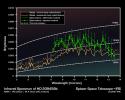
|
-
PIA09198:
-
Cracking the Code of Faraway Worlds
Full Resolution:
TIFF
(21.6 MB)
JPEG
(484.3 kB)
|

|
2007-02-21 |
|
Spitzer Space Telescope
|
Infrared Spectrograph (IRS)
|
3000x2400x3 |
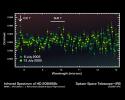
|
-
PIA09197:
-
Cracking the Code of Faraway Worlds
Full Resolution:
TIFF
(21.6 MB)
JPEG
(399.2 kB)
|

|
2007-02-21 |
|
Spitzer Space Telescope
|
|
3000x2400x3 |
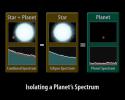
|
-
PIA09196:
-
How to Pluck a Spectrum from a Planet
Full Resolution:
TIFF
(21.6 MB)
JPEG
(298.3 kB)
|

|
2007-02-12 |
Helix Nebula
|
Spitzer Space Telescope
|
IRAC
Multiband Imaging Photometer (MIPS)
|
4279x3559x3 |
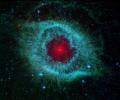
|
-
PIA09178:
-
Comets Kick up Dust in Helix Nebula
Full Resolution:
TIFF
(45.69 MB)
JPEG
(1.944 MB)
|

|
2007-01-26 |
|
Spitzer Space Telescope
|
IRAC
|
720x720x3 |
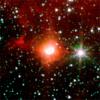
|
-
PIA09119:
-
Luminous Blue Variable: Destined To Be a Supernova?
Full Resolution:
TIFF
(1.557 MB)
JPEG
(53.65 kB)
|

|
2007-01-26 |
|
Spitzer Space Telescope
|
|
3200x2400x3 |
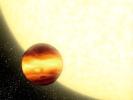
|
-
PIA09118:
-
Forecasting Weather on Distant Worlds (Artist Concept)
Full Resolution:
TIFF
(23.04 MB)
JPEG
(277.9 kB)
|

 Planetary Data System
Planetary Data System





















































































































